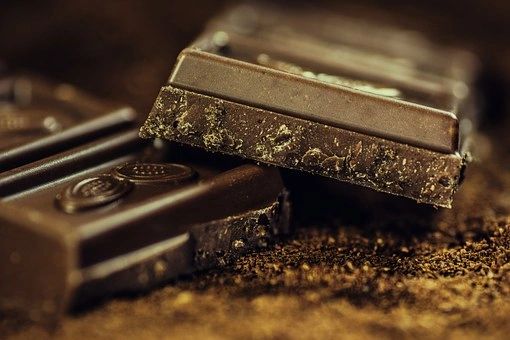
It is not unusual to hear questions in the clinic about how to expedite bone healing when recovering from a fracture. One of these questions revolves around how eating chocolate can improve the recovery time of a fracture. I decided to dive a little deeper into this subject and found a great study that identifies what types of chocolates are the best, for whom, and what types of nutrients cause these chocolates to be so successful.
To start this off, we’ll talk about the make up of the chocolate, and what parts allow it to be so effective. The most significant part of the chocolate are the flavonoids. Flavenoids are part of a group of polyphenols, which are plant based secondary metabolites (Seem et al., 2019). According to Seem et al. (2019), flavenoids contain the compounds catechins, epicatechins, gallocatechins, and epigallocatechins. Of these compounds, it was discovered that cocao beans had the highest amount of catechins and epicatechins. Catechins have been shown to improve inflammatory responses of osteoblasts which helps improve bone breakdown caused by osteoperosis. Flavenoids aid in bone health and out of all the foods, cocoa has the highest levels (Seem et al., 2019).
A study was performed by Seem et al. (2019) comparing a few different types of chocolate to determine if there were any benefits based on the type of chocolate tested. These include cocoa beans, cocoa powder, unsweetened baking chocolate, dark chocolate, and milk chocolate. It was determined that cocoa solids (powder) had the greatest concentrations of flavonoids, therefore the more processed the chocolate, the less flavonoids will be available (Seem et al., 2019). These flavonoid concentration percentages are reflected by the following chocolates:
- Cacao Beans – Catechins (88.45 mg/100g)
- Cocoa Powder – Catechins (64.82 mg/100g)
- Baking Chocolate – Catechins (64.33 mg/100g)
- Dark Chocolate – Catechins (24.20 mg/100g)
- Milk Chocolate – Catechins (4.16 mg/100g) (Seem et al., 2019)
One study performed to analyze serum inflammation and osteoblast preservation. This study demonstrated improved osteoblast preservation and decreased bone serum inflammation (Seem et al., 2019). Another study performed on prepubescent girls found that incorporating high flavonoid chocolates such as cocoa powder into daily routines improved bone growth in the upper and lower extremities. This did not occur with the male population. No significant difference was noted in other populations regarding improving bone growth.
Incorporating cocoa powder into daily routines was also studied between active and sedentary adults. It was found that active young females had improved production in bone the bone production marker serum alkaline phosphatase (Lau et al., 2014). Lau et al. discovered that when testing young active males as well as the sedentary group there was no significant difference in the bone serum.
An additional study was performed on prenatal mothers to determine if consuming cocoa powder could have a positive impact on pregnancy development of mice (Seem et al., 2019). This study determined that there was no positive impact, in fact there was aa decrease in angiogenesis and epiphysial plate formation with the incorporation of cocoa powder (Seem et al., 2019).
So, what does this study tell us? Well with what we’ve just covered, the flavonoid content does not impact bone health significantly in anyone outside of adolescent females. This doesn’t mean that flavonoids are the only beneficial nutrient in chocolate though. According to the 2015-2020 Dietary Guidelines for Americans, calcium, potassium, and vitamin D are the main sources of nutrients from chocolate. It is suggested that although the benefit from cocoa powder is overall good for you, it’s important to make sure you are eating chocolate in moderation. The additional ingredients that make chocolate taste so good can often outweigh the benefits of the vitamins in minerals. If you are going to incorporate more chocolate in your diet, (Seem et al., 2019) recommends dark chocolate with a high cocoa content.
Will incorporating chocolate into your diet improve bone healing? Adding additional vitamins is never a bad idea, and could promote osteocyte production. Everyone is different though! Regardless of your dietary intake, it’s important to keep in touch with your orthopedic specialist to track your recovery and ensure that you increase load and activity based on their professional opinion. For hands and the upper extremity, fractures aren’t typically fully healed and ready for strengthening until 8 weeks.
References
Lau, S.J., Ooi, F.K. (2014). Changes in blood bone turnover markers following combination circuit training programme and chocolate malt drink supplementation in young males. Int J Applied Health Sci.(Vol 1).
Seem, S.A., Yuan, Y.A., and Tou, J. C (2019). Chocolate and chocolate constituents relative to bone health and osteoporosis risk. Volume 65. Elsevier
